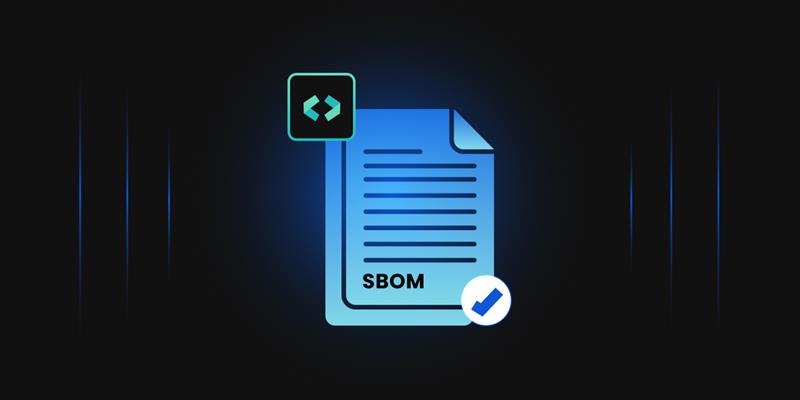In the constantly evolving digital technology world, the significance of code signing has become more apparent. Code signing is a security practice in which software is digitally signed in order to ensure its authenticity and integrity. This method is integral in developing trust, avoiding manipulation, and securing individuals and organizations from unforeseen attacks.
But how secure the process you follow to perform this operation is in question. Are your private keys stored securely in hardware crypto modules such as HSMs, and are those HSMs at least FIPS 140-2 Level 2 or Common Criteria EAL 4+, or are those keys just stored in local machines?
The significance of securely keeping private keys used in code signing cannot be emphasized because these keys form the foundation of the security process. Private keys are sensitive information that should only be accessed by authorized persons.
An attacker can sign and circulate malicious software as genuine code if private keys are compromised. Private keys used in code signing must be securely stored to ensure software trust, integrity, and security. Organizations must establish strong security measures like encryption, access limitations, and frequent audits to protect these keys from unauthorized access and potential compromise.
Maturity Model for Code Signing
How secure or established your code signing process is can be evaluated with the help of a maturity model. Organizations may evaluate, comprehend, and enhance their practices over time using a maturity model, which provides an organized framework. A maturity model’s value in the context of code signing comes from its capacity to direct companies toward a safer and more effective method of developing software.
Maturity models offer a systematic strategy for analyzing the present condition of an organization. Organizations can determine their existing code signing procedures by establishing several maturity levels. A maturity model’s levels correspond to successive phases of development. This gradual approach enables enterprises to concentrate on specific elements of code signing, tackling issues one step at a time. Instead of seeking drastic changes all at once, it offers a feasible and realistic growth route.
One essential element of software security is code signing. A maturity model places a strong emphasis on the creation of policies, ongoing monitoring, and secure key management. By minimizing the possibility of key compromise and unauthorized access, as well as guaranteeing the integrity of signed code, moving up the maturity stages improves security overall.
Code signing maturity models are more than just checklists; they are strategic tools that enable businesses to develop methodically, improve security procedures, and adjust to the always-shifting fields of cybersecurity and software development. The phases listed below can be used to assess the maturity of your present code signing procedure.
Level 1: Initial
-
Ad hoc Code Signing
There are no established procedures or standards; code signing is carried out on an as-needed basis. Code signed by several teams or individuals may be inconsistent or not signed at all, resulting in software integrity problems and security flaws.
-
Limited Awareness
Team members may not completely understand the significance of code signing or its wider security implications while having a fundamental understanding of the concept. They may be unaware of safe procedures or the consequences of using the wrong code signature.
Level 2: Managed
-
Defined Process
During the managed stage, code signing practices are being actively implemented by businesses. Such practices entail creating workflows, recording procedures, and specifying roles and duties for code-signing tasks. Teams may decrease the possibility of mistakes or oversights and guarantee consistency by using well-defined procedures.
-
Centralized Key Management
Organizations centralize handling of the private keys needed for code signing in order to improve security. By improving control and monitoring over key usage, centralized key management lowers the possibility of misuse or unauthorized access to private keys.
Level 3: Standardized
-
Consistent Implementation
Code signing procedures are uniformly used in all software releases at the standardized level. All software updates and releases are signed according to the specified procedures and guidelines. This guarantees that, before deployment, all code is subjected to an equal level of security evaluation.
-
Policy Development
Organizations implement continuous monitoring for code signing activities to detect anomalies or deviations from established norms. These guidelines ensure compliance with security goals and legal requirements by outlining code signing criteria, protocols, and best practices.
Level 4: Optimizing
-
Automated Workflows
Companies incorporate code signing into automated build and deployment pipelines to expedite code signing procedures. As part of the development and release process, automated processes sign code automatically, saving time and effort and guaranteeing consistency. For example, integration with various CI/CD pipelines such as GitHub Actions, Jenkins, Azure DevOps, GitLab, etc.
-
Continuous Monitoring
In order to spot irregularities or departures from set standards, organizations use continuous monitoring for code signing operations. Continuous monitoring makes it possible to identify security problems or illegal activity early on, allowing for quick mitigation and reaction. Proper logging of each action can be beneficial for this.
Level 5: Innovating
-
Advanced Key Management
To further improve the security of code signing procedures, organizations implement advanced key management solutions, such as Hardware Security Modules (HSMs). Hardware-based security for cryptographic keys is offered by HSMs, preventing tampering or unwanted access.
-
Compliance and Certification
To show their dedication to security standards and best practices, organizations get industry certifications pertaining to code signing procedures. Validating the efficacy of code signing procedures and compliance with certification criteria and industry standards contributes to developing confidence with partners and consumers.
Code Signing with Encryption Consulting
Encryption Consulting’s Code Signing solution is secure and seamless. We have cloud-based HSM Key Management. Your private keys are always stored in FIPS 140-2 Level 2 Hardware Security Models. They’re not exportable, hence very secure. You can securely manage and safeguard private signing keys with us in a certified cloud, on-premises, and hybrid HSM. The benefit of our Code Sign Secure also includes Policy Enforcement.
You can centrally manage private keys, define strict policies, monitor usage, and delegate signing responsibilities for robust code-signing practices. We also provide DevOps CI/CD Integration. With this, you can seamlessly integrate and streamline workflows for efficient, hands-free code-signing. Encryption Consulting’s Code Sign Secure platform provides unmatched security with high performance for all your software code-signing cryptographic needs.
Our Key Features
-
HSM-Backed Keys
FIPS 140-2 certified HSMs that use private keys to secure signing keys in on-premises or cloud-based HSMs against risky behaviors.
-
Policy Enforcement with Granular Access Control
Adapt code-signing policies and access restrictions to application-wide settings, adjusting them for teams, users, and certificates to ensure compliance.
-
Client-Side Hashing
With our client-side hashing, you can streamline code-signing and ensure high-performance, quick, and secure signing without requiring bulk file uploads to the server.
-
Event Logs & Tracking
Adaptable processes with thorough audit trails for identifying and resolving security concerns and policy infractions. This also provides multi-tier support and an “M of N” quorum to improve security, thwart illegal access, and protect confidential work.
-
Integration With CI/CD Pipelines
For effective signing, seamless integration with CI/CD workflows and build pipelines is required. This includes easy management of key cycles, encryption policies, and key lengths, compatible with popular platforms like Jenkins, GitHub Actions, and Azure DevOps, enhancing developer productivity and user admin control.
Conclusion
In conclusion, given the ever-changing fields of cybersecurity and software development, the significance of a maturity model for code signing cannot be emphasized enough. A model like this gives companies an organized approach to regularly evaluate, improve, and update their code signing procedures.
A well-organized maturity model for code signing becomes an essential resource for companies dedicated to providing safe, reliable, and legitimate software to customers throughout the globe at a time when software security is of the utmost importance.
With Encryption Consulting’s code sign secure, you can get exactly what you are looking for. Our use of the Hardware Security Model to store keys privately, seamless integration with the CI/CD pipeline, policies with access restrictions to application-wide settings, and logging of every small action can help you securely perform your codesigning operation. To know more, please reach out to us at [email protected]




